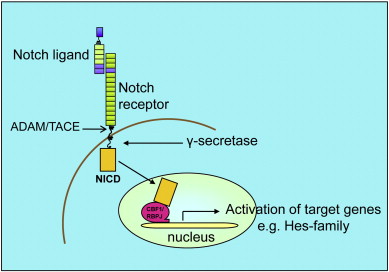What is DLK1 Protein?
The Delta Like Non-Canonical Notch Ligand 1 (DLK1) protein, also known as pre-adipocyte factor 1 (Pref-1), is a transmembrane and secreted protein that is a member of the Notch/Delta/Serrate family. Numerous studies have been implemented exploring the properties and functions of the DLK1 protein, largely because of its marked involvement in physiological and pathological processes, therefore, having significant impacts on human health, treatment and medical research.
DLK1 protein was first discovered in the early 1990s when it was identified in immature adipocyte lines. It was initially characterized due to its ability to inhibit differentiation of these adipocytes, thus naming it Pref-1. DLK1 gene is located on Chromosome 14q32.2 locus, the area associated with various genetic diseases. This protein is encoded by the DLK1 gene, which is classified to be a part of the Notch family of receptors and ligands involved in cell differentiation processes. In terms of its structure, the DLK1 protein is a type 1 transmembrane protein, comprising six extracellular epidermal growth factor (EGF) like repeats, a hydrophobic region and a short cytoplasmic tail.
Function of DLK1 protein
Functionally, DLK1 protein plays a crucial role in adipogenesis and the development of metabolic organs. It has been recognized as a novel regulator of endocrine homeostasis and metabolism. Its expression is significantly high in adipose tissues and involved heavily in the regulation of adipose tissue growth. It serves to maintain an essential balance, as it inhibits differentiation of adipocyte lines, reducing the overall fat content.
DLK1 protein related signal pathway
Furthermore, DLK1 protein also plays a vitally interactive role with specific signaling pathways. It fundamentally acts as an inhibitor of the Notch signaling pathway, which is key for cell communication during embryonic development. The Notch pathway is involved in the regulation of a variety of cell processes such as cell proliferation, differentiation, apoptosis (programmed cell death) and stem cell maintenance. In this capacity, the DLK1 protein significantly contributes to cellular development, function and survival.

Fig1. Possible roles of DLK1 in the Notch pathway
DLK1 protein related diseases
Anomalies and alterations in DLK1 protein activity have been linked to various diseases, notably some cancers, obesity and type II diabetes. Certain cancers including neuroblastoma, hepatoblastoma, osteosarcomas, and certain lung cancers show amplified DLK1 gene expression. This heightened expression has been related to increased metastatic potential, stem cell-like characteristics and poor prognosis in these cancers. In metabolic disorders like obesity and type II diabetes, reduced DLK1 expression leads to an increase in adipose tissue mass, contributing to these conditions.
DLK1 protein's applications in biomedical
Research into the function and implication of the DLK1 protein has provided solid foundations for utilization in biomedical applications. The protein holds great promise as a therapeutic target for the treatment and prevention of a variety of cancers. Specific inhibitors and neutralizing antibodies of DLK1 protein could be developed to target cancer cells, suppress their growth and spread, enhancing overall cancer therapeutics. It can also be a critical biomarker in cancer prognosis, guiding more effective and efficient treatment approaches. Similarly, considering metabolic disorders, the upregulation of DLK1 protein expression may be a plausible therapeutic approach for managing obesity and diabetes, thus reducing the complications associated with these conditions.
In conclusion, DLK1 protein holds crucial roles in aspects of cellular development, differentiation, and metabolic regulation and is directly connected with some severe health conditions including various cancers, obesity and type II diabetes. Its close association with significant signaling pathways and disease advancement has incited substantial biomedical interests. The potential of DLK1 protein as a therapeutic target and a clinical biomarker could revolutionize the future of disease detection and management, significantly contributing to the healthcare and medical research landscape. Research focused on illuminating the quintessential characteristics and abilities of DLK1 protein continues to hold promise for groundbreaking developments in the biomedical field.
Our Featured Products
| Cat.No. | Product Name | Species | Source (Host) | Tag |
|---|---|---|---|---|
| DLK1-12023H | Recombinant Human DLK1, GST-tagged | Human | E.coli | GST |
| DLK1-188H | Recombinant Human DLK1 protein, His-tagged | Human | HEK293 | His |
| DLK1-2801H | Recombinant Human DLK1 Protein, His (Fc)-Avi-tagged | Human | HEK293 | His (Fc)-Avi |
| DLK1-001H | Recombinant Human DLK1 Protein, MYC/DDK-tagged | Human | HEK293T | Myc/DDK |
| Dlk1-216M | Active Recombinant Mouse Dlk1 protein, His-tagged | Mouse | Mammalian cells | His |
| Dlk1-2115M | Recombinant Mouse Delta-like 1 Homolog (Drosophila), Fc Chimera | Mouse | HEK293 | Fc |
| Dlk1-1840M | Recombinant Mouse Dlk1 protein, His & GST-tagged | Mouse | E.coli | His/GST |
Reference
- Falix, F. A., Aronson, D. C., Lamers, W. H., & Gaemers, I. C. (2012). Possible roles of DLK1 in the Notch pathway during development and disease. Biochimica et Biophysica Acta (BBA) - Molecular Basis of Disease, 1822(6), 988-995. https://doi.org/10.1016/j.bbadis.2012.02.003

